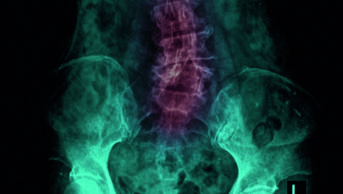
J L Carson, Custom Medical Stock Photo / Science Photo Library
The World Health Organization (WHO) guidelines on cancer pain management recommend three sequential steps: non-opioids for mild pain (step one); weak opioids for mild-moderate pain (step two); and strong opioids for moderate-severe pain (step three).
However, some researchers and international guidelines suggest bypassing step two opioids, such as codeine, in favour of step three opioids like low-dose morphine and oxycodone.
To evaluate this suggestion, researchers in Italy gave 118 patients low-dose morphine and 122 patients weak opioids for 4 weeks. Pain reduction of at least 20% was achieved in 88.2% of patients given low-dose morphine compared with only 54.7% of patients given weak opioids. The rate of adverse events was similar.
In the Journal of Clinical Oncology (online, 7 December)[1]
, the researchers suggest the results could affect the WHO recommendations if confirmed in further studies.
References
[1] Bandieri E, Romero M, Ripamonti CI, et al. Randomized Trial of Low-Dose Morphine Versus Weak Opioids in Moderate Cancer Pain. Journal of Clinical Oncology 2015; doi:10.1200/JCO.2015.61.0733.


